Key Takeaways: Transform your academic writing process with these AI-powered tools that enhance research efficiency. From literature discovery to citation help, these tools complement your scholarly skills without replacing the critical thinking that defines quality academic work.
Table of Contents
Introduction
Imagine spending less time on mechanical research tasks and more time on critical analysis and original thinking. When used strategically, AI tools can help you discover relevant sources more efficiently, challenge your assumptions, and refine your arguments, while keeping you firmly in control of your academic work. Modern tools can now map research landscapes, challenge your arguments, and even show whether a cited paper has been supported or contradicted in scholarly debate. All of this, while significantly reducing drafting time, doing research, improving linguistic precision, and making compelling arguments. Yet the final output and value depend heavily on human oversight.
Moreover, a growing body of scholarly evidence is in consensus that AI-driven assistants have demonstrated promise in enhancing students’ writing abilities, helping them feel more assured and productive while working on their writing.
At Delta Lektorat, we have seen students benefit the most when AI tools are used as thinking partners, not as shortcuts. Whether you’re struggling with the methodology section or need to tighten your argument, the right AI companion can help you work smarter and write with confidence. Here are seven tools we recommend for students who want to strengthen their academic writing while staying in control of their ideas and originality.
We selected these tools based on three criteria:
- they enhance rather than replace critical thinking,
- they address specific pain points in academic writing (research discovery, argument development, source verification),
- they maintain transparency about their sources and limitations.
We deliberately excluded tools that generate content without transparent sourcing (for example, essay-writing platforms like EssayBot) or that encourage academic shortcuts (such as paraphrasing apps like QuillBot or DeepL when used to evade plagiarism checks). Each tool we selected serves a distinct function in the research and writing process, and together they create a comprehensive workflow that supports rigorous academic work.
Note: AI tools develop rapidly. The features described here are accurate as of October 2025, but interfaces and capabilities may change. Always check the official site for the most current information.
Research Rabbit: Map Your Research
Think of Research Rabbit as your research detective. It doesn’t find papers but reveals the hidden connections between them. Students often get lost in the ‘citation rabbit hole’: you see one excellent paper, then spend hours following citations without a clear strategy. Research Rabbit solves this by creating interactive maps of research landscapes, allowing you to see which papers are truly central to your field and which are peripheral. This often surfaces sources you wouldn’t find via Google Scholar alone.
Our Pro Tip: Start with 2-3 papers you already know are central to your research topic. Let Research Rabbit build the network around them, then use the ‘Collections’ feature to organise different thematic areas. See our example:
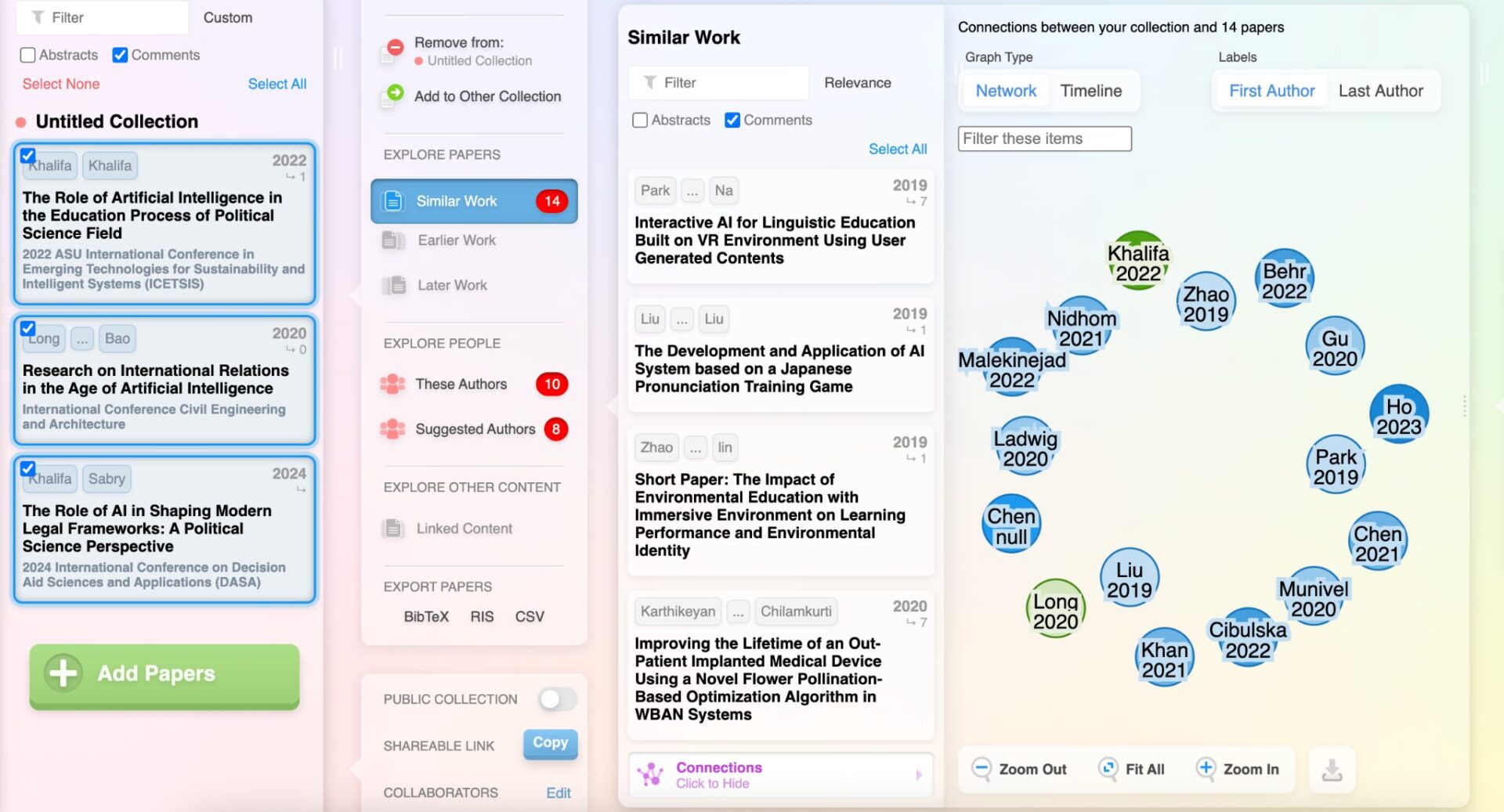
Perplexity: Explore Real-Time Research and Sources
Perplexity combines AI convenience with academic rigor by sourcing current research with citable sources. Unlike most standard versions of ChatGPT, which do not have direct access to current web content, Perplexity actively searches the web and cites every claim with a mix of open-access and linked sources. (Note: ChatGPT Pro now also offers a web-browsing feature to access recent information.) This tool is particularly valuable for students working on current events, recent scientific developments, or any topic where up-to-date information is crucial. Each answer includes source links that allow you to verify claims and dive deeper into the original materials, and with the right prompt, you can even have citations automatically formatted in styles such as APA 7, Harvard, MLA, or Chicago.
Our Pro Tip: Always check the source list at the bottom of Perplexity‘s answers. Prioritise links from peer-reviewed journals, academic publishers, or well-known research institutions. Then, click into one of those sources and ask Perplexity follow-up questions explicitly based on that paper, as this keeps your research anchored in credible, citable material. Here is an example:

Semantic Scholar: Discover the Most Influential Papers in Your Field
Semantic Scholar is like having a research librarian who knows your field inside out. It uses AI to rank and recommend the most influential papers, ensuring your literature review covers both the classic works and the latest breakthroughs. You can filter results by publication year, relevance, or citation count, making it easier to avoid wasting time on marginal or outdated studies. You can filter results and sort by Most Influential to quickly find papers that have shaped the field. One standout feature is its ability to surface ‘highly influential citations’ for any given paper, highlighting which works truly shaped the field.
Our Pro Tip: When you search on a key topic of your academic interest, always apply the key filters:
1) date range (ideally search for articles in the last 5-10 years) and
2) sort by most influential. See our example:

ChatGPT: Brainstorm and Refine Your Arguments
No list would be complete without the tool that sparked the AI-in-education debate. ChatGPT, when used ethically, is a powerful brainstorming partner for clarifying complex concepts, testing arguments, and exploring multiple perspectives. The key principle to remember is that ChatGPT should function as your thinking partner, not as your content creator or generator. Rather than producing text you plan to submit as original work, use ChatGPT to explore multiple perspectives on complex topics and refine your analytical approach.
Our Pro Tip: When developing your thesis argument, ask ChatGPT to challenge your position by prompting: “I believe [argument/position]. Play devil’s advocate and present the strongest counterarguments to this, including potential weaknesses in its reasoning.” See our example:
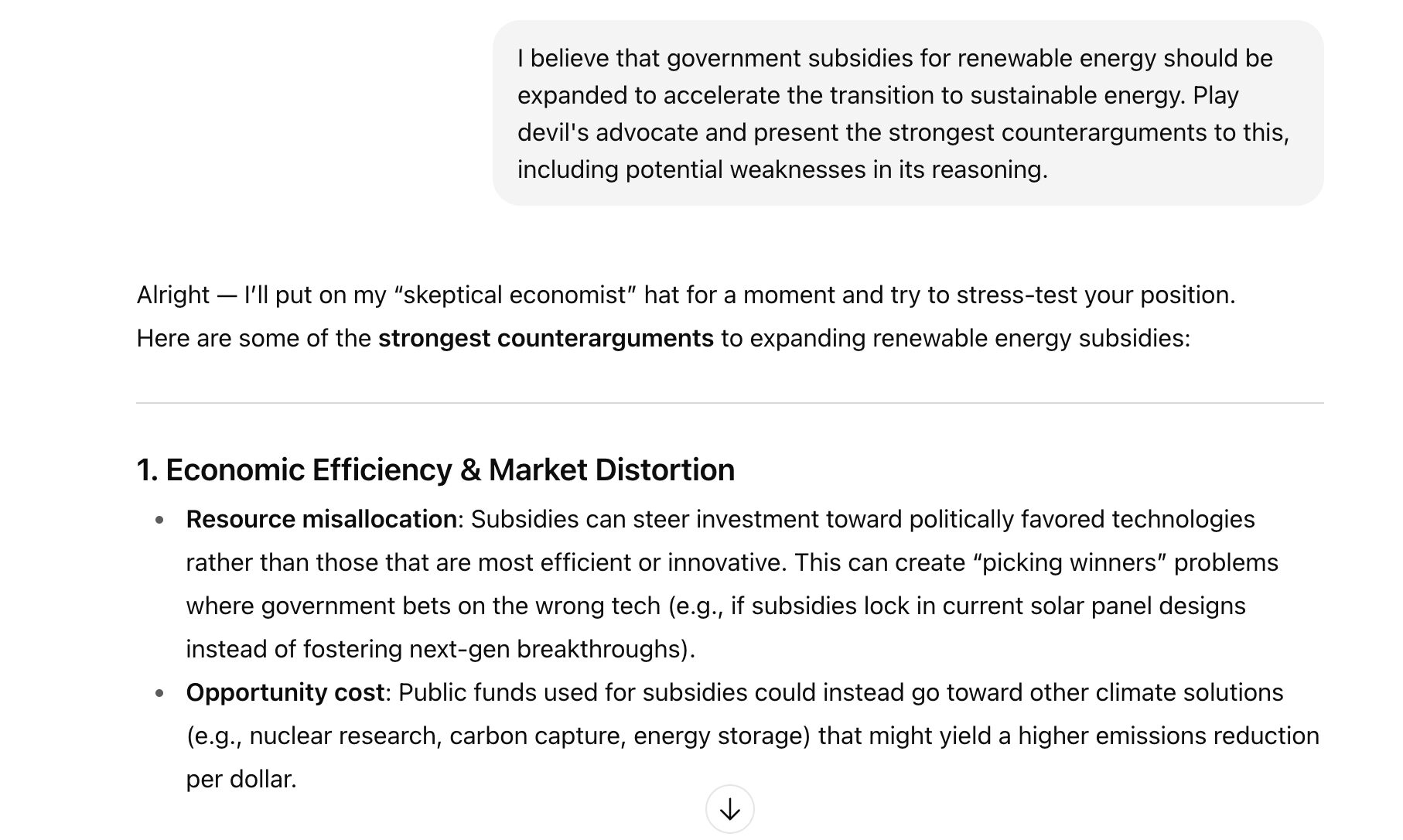
Claude: Use Deep Reasoning for Theses
Claude excels at structured reasoning and maintaining context over long documents, particularly useful for theses and dissertations. What sets Claude apart is its ability to help you identify gaps in reasoning, refine arguments, and maintain an academic tone while explaining complex concepts (though final review is essential to ensure style consistency). Rather than simply generating content, Claude can analyse your existing work and suggest improvements to logical flow, identify unstated assumptions, or highlight areas where additional evidence would strengthen your position.
Our Pro Tip: Prompt Claude with: “Break down [complex concept/theory/argument] into its core components, then analyse how each component connects to the others and contributes to the overall framework.” Here is an example:
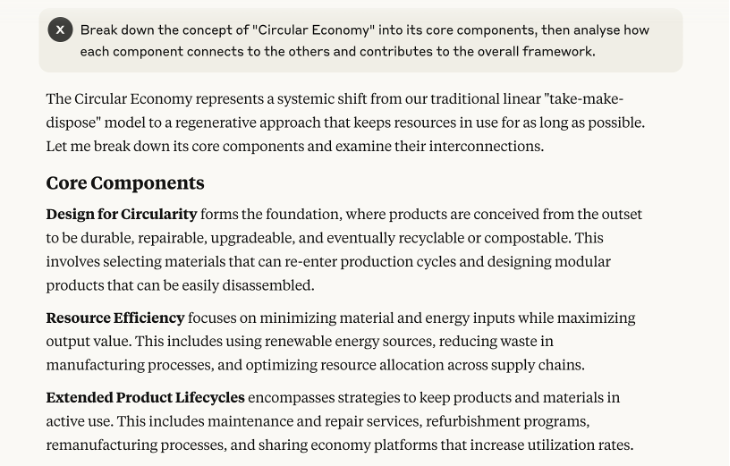
Scite: Discover the Scholarly Conversations Behind Citations
Scite changes how you understand citations by showing how a work is cited, whether it’s supported, contradicted, or simply mentioned. This goes beyond citation counts to reveal the scholarly conversation around a topic, helping students understand the real scholarly conversation around any piece of research. We regularly see students cite papers as ‘definitive’ without realising that other scholars have published major critiques of them. Scite prevents this pitfall.
Our Pro Tip: Use Scite‘s filters to sort citations by supporting, contrasting, or mentioning. It will help you see not just how often a paper is cited, but how it is noted. Prioritise highly relevant citations for your topic and pay special attention to contrasting studies; they‘re gold for strengthening your arguments and addressing potential counterpoints in your writing. Here is an example:
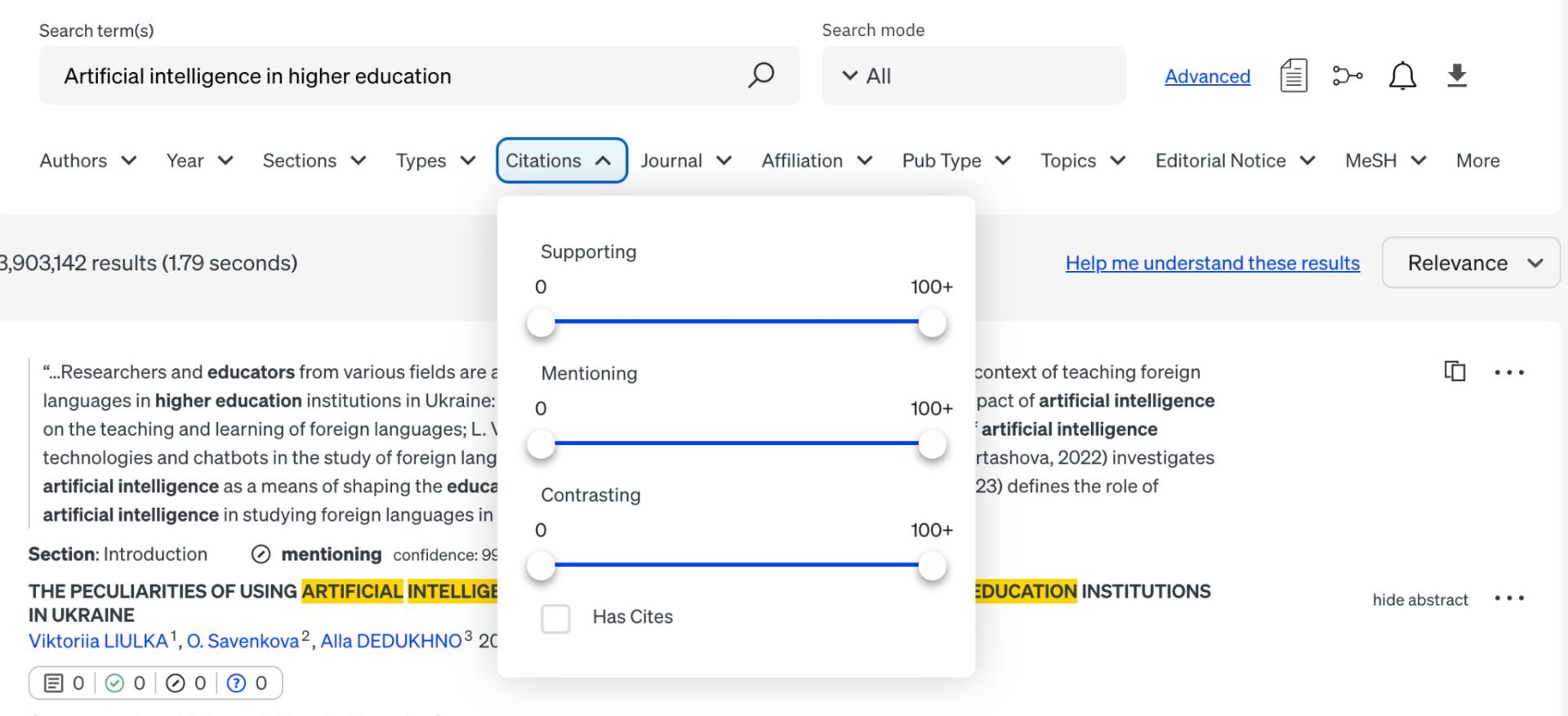
Writefull: Strengthen Your Academic Writing
Writefull is an academic writing assistant explicitly designed for scholarly writing. Unlike general writing assistants, Writefull is trained primarily on academic texts, making it skilled at ensuring formal tone, precise terminology, and discipline-specific writing patterns. The tool goes beyond basic grammar checking to understand academic argumentation patterns, helping students write with the precision and clarity expected in university-level work.
Our Pro Tip: Use Writefull ‘s Academizer to transform informal or general sentences into polished academic language instantly. Paste a draft into it and see how it suggests more formal, discipline-appropriate alternatives that fit scholarly writing standards. Here is an example:
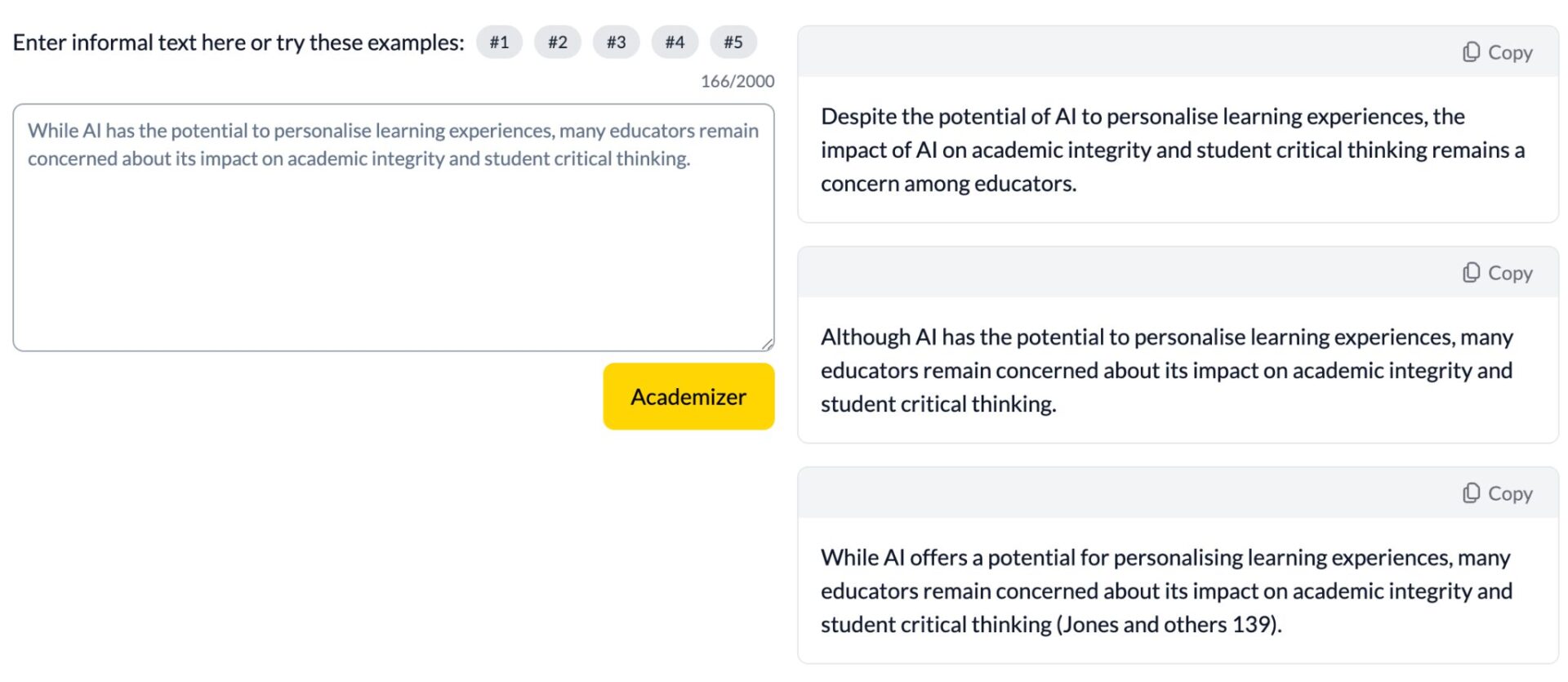
Conclusion
These seven AI tools represent different stages of the academic writing process, from initial research discovery through final writing refinement. While other promising tools exist, mastering this core set first will give you a solid foundation.
To conclude, we have put together a workflow you can follow. Note that it should not always be used linearly; as your research evolves, you’ll move back and forth between discovery, analysis, and refinement.

Get Professional Academic Support
Sometimes you need more than better tools, you need expertise that sees patterns you’re missing. Ready to take your academic writing to the next level? Request a free offer here.
If you know a fellow student battling their thesis, share this article and help them discover tools that make research and writing easier. If you want to explore how we can support your thesis writing, check our services at Delta Lektorat.
Frequently Asked Questions (FAQs)
Not if you use them ethically, for brainstorming, structuring ideas, or checking clarity, rather than copying and submitting AI-generated text as your work. It’s important to clearly acknowledge where and how you used AI, and to always follow your university’s academic integrity guidelines.
For mapping research connections, start with Research Rabbit. For finding influential papers, use Semantic Scholar. If you need the latest studies, try Perplexity.
No. AI can speed up research and surface hidden connections, but it can't replace your ability to critically evaluate sources, synthesise findings, and apply them in context
It varies. Tools like Perplexity and Scite show source links so you can verify accuracy. Always double-check any claim before including it in academic work.
Disclosure: This article was prepared by human contributors. Generative AI tools were used to support brainstorming, language refinement, and structural editing. All final decisions regarding content, recommendations, and academic insights reflect human judgment and expertise.
References
Aljuaid, H. (2024). The Impact of Artificial Intelligence Tools on Academic Writing Instruction in Higher Education: A Systematic Review. Arab World English Journal (AWEJ) Special Issue on ChatGPT, 26-55. https://dx.doi.org/10.24093/awej/ChatGPT.2
Kasneci, E., Sessler, K., Küchemann, S., Bannert, M., Dementieva, D., Fischer, F., Gasser, U., Gawrilow, C., Harasimczuk, J., Heuer, H., Kopp, B., Lachner, A., Leiser, A., Nistor, N., & Kasneci, G. (2023). ChatGPT for good? On opportunities and challenges of large language models for education. Learning and Individual Differences, 103, 102274. https://doi.org/10.1016/j.lindif.2023.102274
Khalifa, M., & Albadawy, M. (2024). Using artificial intelligence in academic writing and research: An essential productivity tool. Computer Methods and Programs in Biomedicine Update, 5, 100145. https://doi.org/10.1016/j.cmpbup.2024.100145
Dea is a senior researcher passionate about helping students navigate the world of academia. She explores the intersection of AI and scholarly work, offering insights on how technology can enhance writing, research, and learning. As the Head of Partnerships at Delta Lektorat, Dea leads collaborations with universities and student associations to promote excellence in academic writing and innovative approaches to thesis support. Her work focuses on bridging traditional academic rigour with emerging digital tools that empower students and scholars alike.



